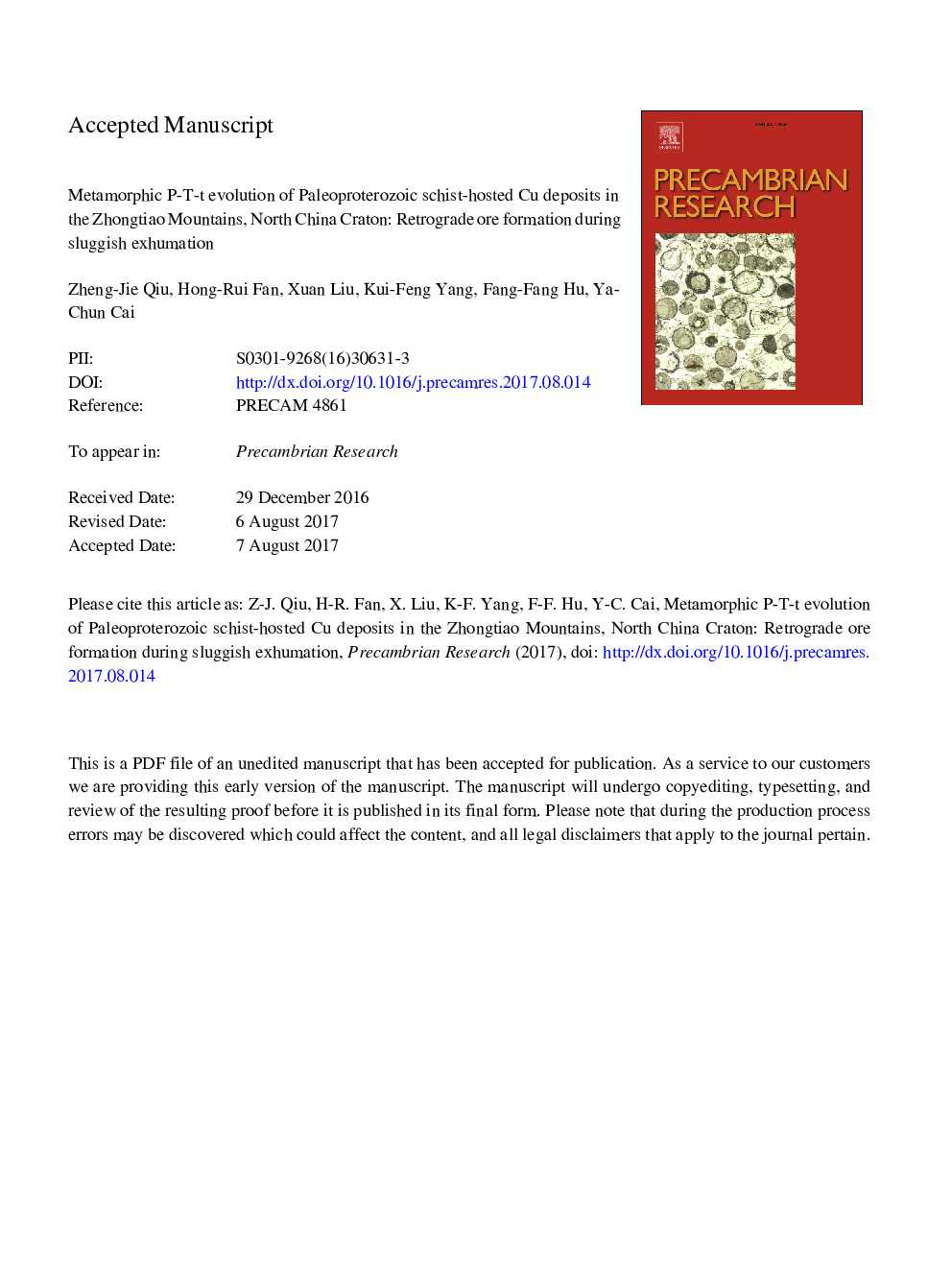| کد مقاله | کد نشریه | سال انتشار | مقاله انگلیسی | نسخه تمام متن |
|---|---|---|---|---|
| 5784684 | 1639575 | 2017 | 84 صفحه PDF | دانلود رایگان |
عنوان انگلیسی مقاله ISI
Metamorphic P-T-t evolution of Paleoproterozoic schist-hosted Cu deposits in the Zhongtiao Mountains, North China Craton: Retrograde ore formation during sluggish exhumation
دانلود مقاله + سفارش ترجمه
دانلود مقاله ISI انگلیسی
رایگان برای ایرانیان
کلمات کلیدی
موضوعات مرتبط
مهندسی و علوم پایه
علوم زمین و سیارات
ژئوشیمی و پترولوژی
پیش نمایش صفحه اول مقاله

چکیده انگلیسی
The stratabound Cu deposits in the Zhongtiao Mountains district contain good records about the Precambrian tectonic evolution in the central North China Craton. Five stages of metamorphic and metallogenic processes are identified and the P-T conditions are constrained using mineral geothermobarometry and P-T pseudosection. Results revealed a prograde metamorphism (stage M â 1) from 565 to 630 °C, and peak metamorphism of 6.5 ± 0.5 kbar and 610 ± 20 °C (stage M â 2). The post-peak metamorphism consisted of a continued retrogression (stage M â 3) at 545 ± 5 °C and 6.0 ± 0.1 kbar, and Cu mineralizations (stages M â 4 and M â 5). Two distinct mineral assemblages of arsenopyrite-pyrrhotite-pyrite-chalcopyrite and bornite-chalcopyrite-parkerite- wittichenite-bismuth are observed in veinlets. The Cu mineralization occurred from 446 to 341 °C at a pressure of â¼5.0 to 4.4 kbar. We obtained laser ablation ICPMS monazite U-Pb ages of 1881 ± 15 Ma and 1863 ± 17 Ma for staurolite schist and mineralized veins, respectively. A Nano-secondary ion mass spectrometer zircon U-Pb age of 1815 ± 32 Ma for fluid-modified zircon rims from host schist. These ages are interpreted as the timing for the stages M â 2, M â 4 and M â 5, respectively. These results define a clockwise P-T-t path that displays nearly parallel prograde and retrograde trajectory (Franciscan type). The retrograde portion is similar to near-isobaric cooling (IBC) stage, which supports a relatively slow exhumation following a continental collision. It is proposed that the ore materials were mainly derived from the host rocks, which might have been pre-enriched. Cu mineralization formed during the retrograde cooling stage at greenschist facies, and was likely related to a post-orogenic sluggish exhumation at a rate of 0.31-0.05 mm/yr.
ناشر
Database: Elsevier - ScienceDirect (ساینس دایرکت)
Journal: Precambrian Research - Volume 300, October 2017, Pages 59-77
Journal: Precambrian Research - Volume 300, October 2017, Pages 59-77
نویسندگان
Zheng-Jie Qiu, Hong-Rui Fan, Xuan Liu, Kui-Feng Yang, Fang-Fang Hu, Ya-Chun Cai,